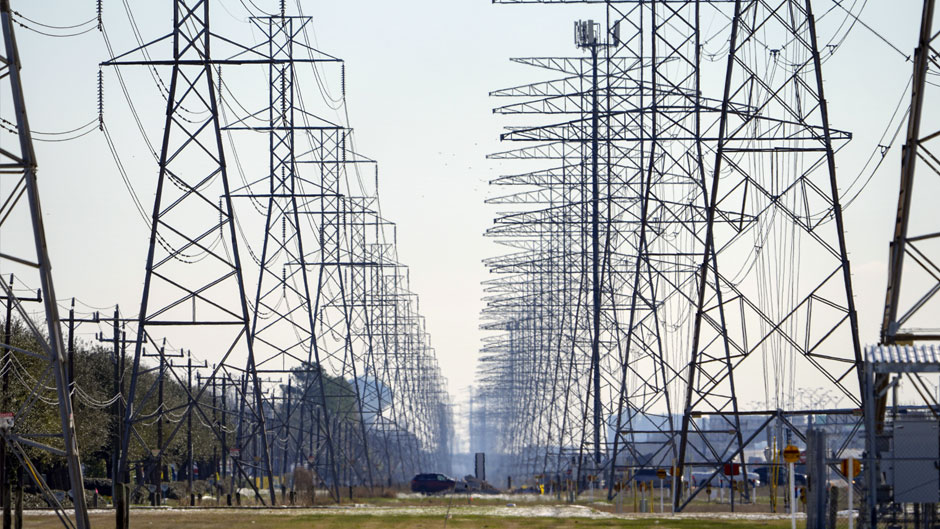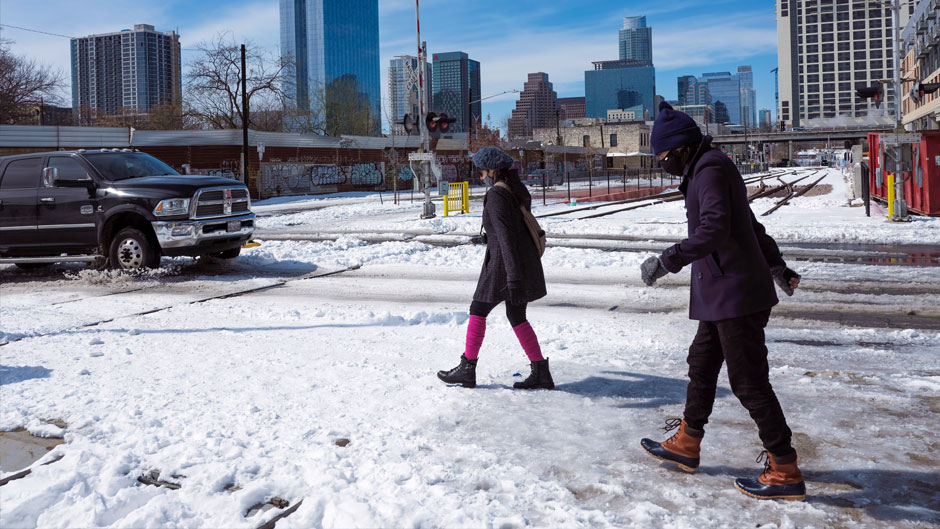The news coming out of Texas is disturbing, a frightening glimpse of what a post-apocalyptic world without power would look like—people burning furniture in their fireplaces to stay warm from frigid temperatures, and a woman and a small child succumbing to carbon monoxide poisoning after using their automobile to keep warm from the numbing cold.
As devastating winter storms wreak havoc in the nation’s second-largest state and in other parts of the United States, causing widespread power outages, attention has once again been thrust on the need to repair and ramp up the nation’s aging infrastructure.
“The current infrastructure failures under extreme cold are a reminder that much of our infrastructure is designed to perform for a range of weather and climate conditions. Beyond those conditions, the failures can cascade,” said Katharine J. Mach, an associate professor at the University of Miami Rosenstiel School of Marine and Atmospheric Science, who is an expert on climate risk and adaptation.
From California summer blackouts to the failure of the Texas power grid amid freezing temperatures to tropical cyclones that can cripple power systems in the Southeast for weeks, the United States’ electric grid is “susceptible to extreme climate events and will require infrastructural upgrades” to prevent future catastrophes such as the one being experienced now in Texas, said Nurcin Celik, an associate professor of industrial engineering at the College of Engineering, whose research focuses on microgrids and smart energy systems for cities.
According to Celik, to help prevent the disruption of power during volatile weather conditions, Texas, in particular, could form a grid coalition with neighboring microgrids—small-scale power systems that operate while connected to, and in sync with, centralized electricity networks but which function independently in emergencies.
It has been done before, and could work now, Celik said. “During World War II, other grids needed Texas; and in 1976, Texas needed to export excess power to Oklahoma for hours,” she explained.

The 268,000-square-mile state, where at one point more than 3 million people were without electricity, actually has its own power grid. The Electric Reliability Council of Texas, or ERCOT, covers about 90 percent of the state, providing power for 26 million customers. The Eastern Interconnection and the Western Interconnection electrify large swaths of the rest of the country.
But the frigid weather crippled the Texas power grid, and now just about everyone is looking for someone to blame, with many people saying operators failed to adequately prepare for the winter storm.
In addition to grid cooperatives, Celik noted that the state could benefit from “smart meters that could be utilized for demand-side management. And proper market dynamics for utilities are needed to enhance self-healing and preparedness capabilities.”
Large energy storage reserves could help meet power demands, and decentralized microgrids could also help make a difference, she pointed out. “Managing multiple small-scale microgrids could provide built in redundancies, minimizing the impact of failure,” she added. “Yet, their management and control add different layers of challenges, particularly when renewables are included due to higher levels of uncertainties.”
Celik was recognized by President Barack Obama with a Presidential Early Career Award for Scientists and Engineers. Along with College of Engineering doctoral candidate Joshua Darville, she is investigating ways to improve self-healing smart grids and microgrids. She addresses a couple of questions related to the Texas power grid and power grids in general.
Why does Texas have its own power grid?
It goes all the way back to the development of electric utilities since the time of having our very first power plant in the late 1800s. Texas has significant amounts of coal, oil, and natural gas, and naturally took up on the task of building generating plants to supply its demand. Different utilities started to connect with each other through transmission networks between the first and second World Wars. Texas Interconnected System also was formed around the same time to share electricity across different utilities in Texas and stay unregulated when the country was figuring out the regulations for interstate electricity sales. Electric Reliability Council of Texas was founded in 1970 to manage grid reliability and interstate electric transmission per national standards.
Why are power grids vulnerable to extreme weather like the freezing temperatures we’ve been seeing over the past few days?
Grids are susceptible to blackouts regardless of the temperature if there is a power mismatch—that’s when the supply does not meet the demand. Below-freezing temperatures make them more vulnerable, causing power surges, which in turn may lead to further blackouts—as they may cause equipment damage, for example, by basically having too much power in lines either through a physical or chemical process.

